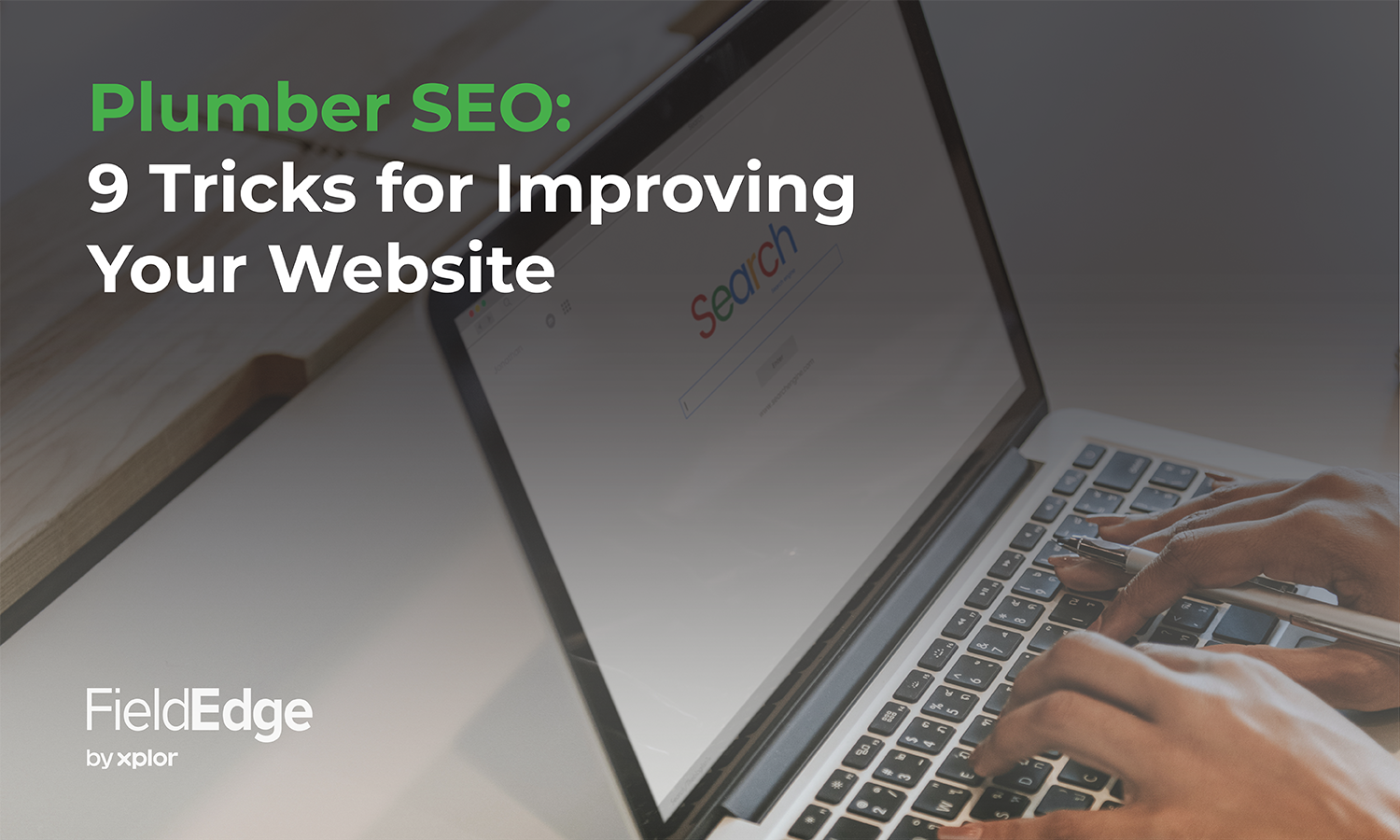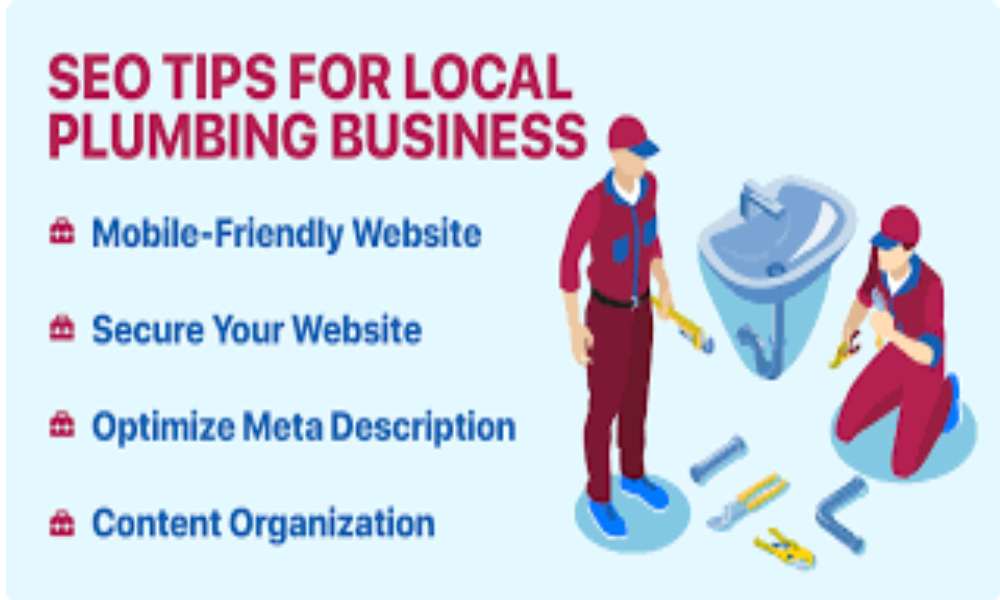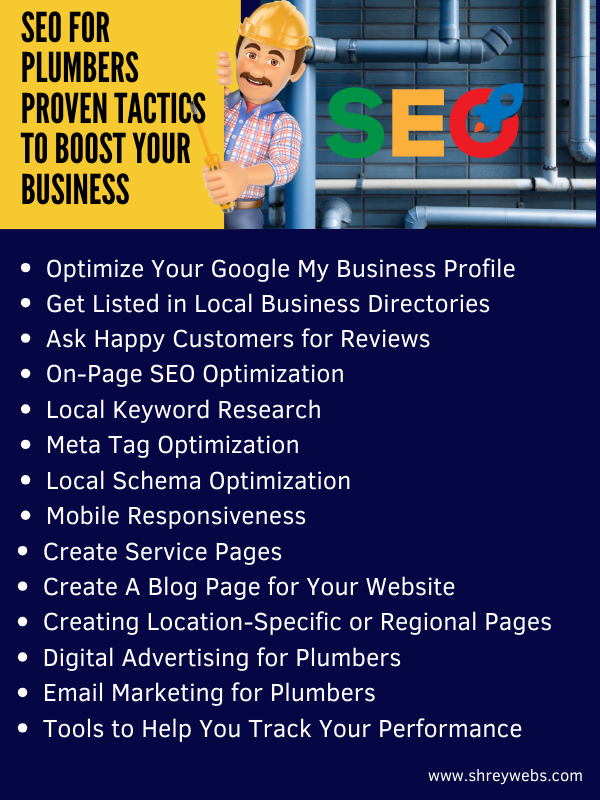Optimize your plumbing website for SEO by incorporating relevant keywords and ensuring mobile responsiveness. Streamline site navigation and enhance loading speeds to improve user experience.
Creating a robust online presence for your plumbing business is crucial in today’s digital age. With competition just a click away, standing out in search engine results is essential. A well-optimized website serves as your virtual storefront, attracting potential customers and converting clicks into clients.
By implementing strategic SEO practices, you can increase your website’s visibility, making it easier for homeowners to find your services when they face a leaky faucet or a burst pipe. The foundation of a successful SEO campaign is built on thorough keyword research tailored to your industry and locale, as well as a user-friendly design that keeps visitors engaged. Ensuring your website is informative, accessible, and fast can set your plumbing services apart from the competition.

Credit: fieldedge.com
Kickstarting Your Seo Journey
Embarking on SEO can transform your plumbing website’s visibility. It helps customers find your services online. Let’s explore the first vital steps to optimize your site for search engines.
Identifying Target Keywords
Start by pinpointing keywords that potential clients use. These are phrases they type into search engines. Think about common plumbing issues and services. Use tools like Google Keyword Planner for this task.
- Leak detection
- Drain cleaning
- Emergency plumbing
- Faucet repair
Consider local terms too. Add your city or region to those services. This attracts nearby customers. ‘Emergency plumbing Dallas’ is an example.
Understanding Your Audience
Who needs your plumbing services? Identify your customer base. It might include homeowners, businesses, or property managers. Know their common problems and tailor your content to solve them.
| Customer Type | Common Issues | Services Sought |
|---|---|---|
| Homeowners | Leaks, Clogs | Repairs, Maintenance |
| Businesses | Pipe Damage, Compliance | Installations, Inspections |
Use language that speaks directly to these groups. Avoid technical jargon. Keep it simple and clear. This ensures your content is relatable and engaging.
On-page Seo Essentials
On-Page SEO Essentials are vital for plumbing websites. They help search engines understand and rank your site higher. Let’s dive into key on-page strategies.
Crafting Compelling Content
Your plumbing website needs quality content. It should inform and engage users. Content must be relevant to your services. Use simple language. Break text into small paragraphs.
- Include keywords naturally in your text.
- Write about common plumbing issues and solutions.
- Use headings and subheadings for better readability.
- Keep your content updated regularly.
Optimizing Meta Tags And Images
Meta tags and images must be optimized. This helps in improving visibility. Here’s how to do it:
| Element | Action |
|---|---|
| Title Tag | Include main keywords; keep it under 60 characters. |
| Meta Description | Summarize page content with keywords; keep under 160 characters. |
| Images | Use descriptive file names and alt text with keywords. |
Remember to compress images for faster load times. Fast websites attract more users.
Technical Seo For Plumbing Websites
Technical SEO is a cornerstone for a plumbing website’s success. It ensures search engines can crawl and index your site efficiently. Let’s dive into specifics that can help your plumbing site rank higher.
Improving Site Speed
Site speed is crucial for user experience and SEO. A fast-loading site keeps visitors engaged. Slow sites rank lower in search results.
- Compress images to reduce file size.
- Minify CSS, JavaScript, and HTML.
- Use caching to speed up page load times.
Tools like Google PageSpeed Insights guide you through optimizing site speed.
Ensuring Mobile-friendliness
Your plumbing website must work well on phones and tablets. Mobile-friendliness affects rankings and user satisfaction.
- Use a responsive design that adapts to all screen sizes.
- Choose large, readable fonts.
- Ensure easy navigation on touch screens.
Google’s Mobile-Friendly Test can check your site’s mobile compatibility.

Credit: threevistas.com
Local Seo: Capturing The Local Market
Local SEO: Capturing the Local Market is crucial for plumbing businesses. Most clients are local homeowners and businesses. They turn to the internet to find quick plumbing solutions nearby. A strong local SEO strategy puts your plumbing website in front of these potential customers. Let’s dive into how you can dominate your local market online.
Optimizing For Google My Business
Google My Business (GMB) is a powerful tool for local businesses. It helps customers find you easily. Ensure your GMB profile is complete and accurate. Add your business name, address, and phone number (NAP). Include your operating hours, services, and professional photos. Encourage satisfied customers to leave positive reviews. High-quality reviews boost your visibility and credibility.
Managing Local Citations
Local citations are mentions of your plumbing business on the web. They include your NAP and sometimes a link to your website. Citations come from business directories, social profiles, and industry-specific sites. Consistent information across all citations is key. It helps search engines trust and rank your business higher. Check and update your citations regularly for accuracy.
- Check top directories for existing citations.
- Create new citations on relevant sites.
- Update any incorrect information promptly.
Remember, local SEO helps connect with nearby clients. Optimize your GMB profile. Manage your local citations well. Your plumbing website will climb the search rankings, reaching more customers.
Building Authority With Backlinks
Building Authority with Backlinks boosts your plumbing website’s SEO. High-quality backlinks signal trust and relevance to search engines, pushing your site up in rankings. Let’s explore effective strategies to secure valuable backlinks and keep track of your backlink health.
Strategies For Acquiring Quality Backlinks
- Guest Posting: Write articles for reputable plumbing blogs. Include a link to your site.
- Local Directories: List your business in local plumbing and home service directories.
- Supplier Partnerships: Get links from product suppliers or brands you work with.
- Social Sharing: Share insightful content on social media. Earn natural backlinks.
- Professional Associations: Join plumbing associations. Benefit from their online resources.
- Infographics: Create and share useful infographics. Other sites may link back to your original content.
Monitoring Your Backlink Profile
Regularly check your backlinks’ health. Use tools like Ahrefs or Moz for monitoring.
Look for:
- Link Quality: Ensure backlinks come from reputable sites.
- Relevance: Backlinks should be from plumbing or related industry sites.
- Anchor Text: Check if the anchor text used is relevant to your plumbing services.
- Number of Links: A sudden drop might signal lost backlinks. Investigate promptly.
Disavow harmful backlinks through Google’s Disavow Tool. Protect your site’s credibility.

Credit: indeedseo.com
Frequently Asked Questions
How Do I Optimise My Website For Seo?
To optimize your website for SEO, conduct keyword research, create quality content, ensure fast loading speeds, use descriptive meta tags, and build a mobile-friendly design.
What Is Seo Plumbing?
SEO plumbing refers to optimizing a plumbing company’s website to rank higher in search engine results, attracting more online traffic and potential customers.
How To Improve Seo For A Website?
To boost SEO, research and use relevant keywords. Create quality, engaging content regularly. Optimize meta tags and images. Ensure mobile-friendliness and fast loading speeds. Build reputable backlinks.
How Do I Optimize My Onsite Seo?
To optimize onsite SEO, start by researching relevant keywords. Ensure your website has a mobile-friendly design. Create high-quality content that addresses user queries. Optimize meta tags and images for better visibility. Lastly, improve site speed and user experience for higher engagement.
What Are Top Seo Strategies For Plumbers?
Effective SEO strategies for plumbers include keyword optimization, creating quality content, local SEO focus, mobile-friendly design, and securing online reviews.
Conclusion
Optimizing your plumbing website for SEO isn’t just beneficial; it’s essential. Simple changes can drive more traffic, ensuring your services reach those in need. Remember, keywords and mobile optimization are your best tools. Start applying these tips today, and watch your online presence grow.
Success is just a few clicks away.


